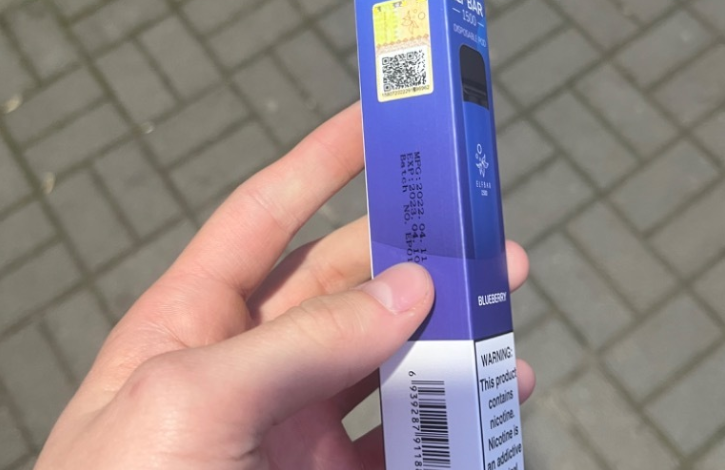Jednorazówki: Everything You Need to Know About Jednorazówki

Jednorazówki are disposable cameras, have been around for decades and are a popular choice for capturing memories and moments in time. These compact and inexpensive cameras provide a nostalgic charm that digital cameras or smartphones cannot replicate.
But what exactly are jednorazowki? In this section, we will delve deeper into the history of these cameras, their construction, features, and why they continue to be a beloved tool for photography enthusiasts.
History of Jednorazowki
The concept of disposable cameras can be traced back to the 1940s when Kodak first introduced its single-use film camera called the “Kodak Ektra.” However, it wasn’t until the 1980s that disposable cameras gained widespread popularity with other brands such as Fujifilm and Konica entering the market.
Initially marketed as an affordable option for travelers or those attending special events like weddings or parties, disposable cameras quickly became a favored choice for everyday use due to their convenience and simplicity. Despite the rise of digital photography in the early 2000s, Jednorazówki continued to maintain their popularity among consumers.
Construction and Features
Disposable cameras are made up of simple plastic bodies with fixed lenses and attached flashes. They usually come loaded with film inside that has enough capacity for approximately 27 exposures. Once all shots have been taken, users can return them to stores where they will be developed and printed onto physical photographs.
History and Origin of Jednorazówki
The history and origin of Jednorazowki, also known as single-use bags, dates back to the early 1950s when plastic bags were first invented. The idea behind these bags was to create a cheap and convenient way for consumers to carry their purchases from stores.
At the time, paper bags were the main option for packaging goods. However, they were expensive and not as durable as plastic. This led to the rise in popularity of plastic bags, which were cheaper to produce and could hold more weight without tearing.
In 1957, Swedish engineer Sten Gustaf Thulin developed the concept of the modern-day single-use bag. His design consisted of an open-top bag with two handles that could easily be carried around by customers. This design proved to be very popular and was quickly adopted by retailers all over Europe.
However, it wasn’t until 1965 when American company Mobil Oil Corporation patented a stronger and more durable version of Thulin’s bag that its use became widespread in the United States. These new plastic bags were made from high-density polyethylene (HDPE) and could hold more weight than previous versions.
As consumerism continued to rise in the late 20th century, so did the use of single-use bags. They became a staple in almost every store, from grocery shops to clothing boutiques.
But with their convenience came environmental concerns. It was estimated that by 1985, Americans alone were using over one billion plastic shopping bags per week.
How Jednorazówki Are Made
Jednorazowki, also known as disposable face masks, have become a common sight in our daily lives. Whether it’s for protection against air pollution or the current COVID-19 pandemic, these single-use masks have become an essential item for many people. But have you ever wondered how jednorazowki are made? In this section, we will take a closer look at the manufacturing process of these disposable face masks.
Materials Used:
The first step in making jednorazowki is to gather all the necessary materials. The main material used in most disposable face masks is non-woven fabric, which is typically made from polypropylene fibers. This material is lightweight, breathable, and has filtering properties that make it ideal for use in face masks. Other materials used may include elastic bands for ear loops and metal strips for nose clips.
Cutting and Layering:
Once all the materials are gathered, the next step is to cut them into appropriate sizes and shapes. The non-woven fabric is fed through large machines that cut it into rectangular pieces. These pieces are then layered on top of each other to create multiple layers of fabric.
Welding or Ultrasonic Sealing:
After layering the fabric, it needs to be sealed together to form a complete mask shape. There are two methods commonly used for this process: welding and ultrasonic sealing.
Welding involves using heat to join the layers of fabric together along the edges of the mask,
Types of Jednorazówki
There are several different types of jednorazowki, also known as single-use plastic products. Each type serves a specific purpose and can be found in various forms and sizes. In this section, we will discuss the most common types of jednorazowki and their uses.
Plastic Bags: Perhaps the most well-known type of jednorazowka is the plastic bag. These bags are typically made from thin polyethylene and can vary in size from small grocery bags to large garbage bags. Plastic bags are often used for carrying groceries, packing lunches, storing household items, and disposing of waste. However, due to their lightweight nature and lack of biodegradability, they have become a major contributor to environmental pollution.
Straws: Another popular type of jednorazowka is the plastic straw. They are commonly used in restaurants and fast-food chains for sipping drinks such as soda or smoothies. While they may seem harmless, straws are a significant source of plastic pollution in oceans and can harm marine life when ingested or entangled.
Cutlery: Disposable cutlery such as spoons, forks, and knives made from plastic is another common type of jednorazowka that is widely used at parties, events, take-out restaurants, and even on flights. These items are convenient for one-time use but contribute greatly to landfills when not disposed of properly.
Uses and Benefits of Jednorazowki
Jednorazowki, also known as disposable products, have become an essential part of our daily lives. From paper plates to single-use cutlery and even disposable diapers, these products offer convenience and ease in various aspects of our routines. In this section, we will delve deeper into the uses and benefits of jednorazowki.
Convenience: One of the main reasons why jednorazowki are widely used is because they provide convenience. These products are designed to be used once and then disposed of, eliminating the need for washing or cleaning up afterwards. This is particularly useful when hosting parties or events where there are a large number of guests.
Hygiene: Another significant benefit of using disposable products is that they promote hygiene. For example, using paper towels instead of cloth towels reduces the spread of germs as they are not reused multiple times. Similarly, disposable diapers help keep babies clean and prevent rashes compared to cloth diapers which require frequent washing.
Time-saving: With busy schedules and hectic lifestyles, time-saving has become crucial for many people. Disposable products allow us to save time by eliminating the need for cleaning up after use. This comes in handy especially during travel or when on-the-go.
How to Properly Use and Store Jednorazowki
Jednorazowki, or disposable items, have become an essential part of our daily lives. From cleaning products to food packaging, these single-use items are convenient and cost-effective. However, with the growing concern for environmental sustainability, it is crucial to understand how to properly use and store jednorazowki to reduce waste and minimize their impact on the environment.
In this section, we will discuss the proper ways of using and storing jednorazowki to make them last longer and reduce their environmental footprint.
Use them only when necessary
The first step in properly using jednorazowki is to limit their usage. As convenient as they may be, try to avoid using them whenever possible. For example, instead of using paper plates for a family dinner, opt for reusable dishes that can be easily washed after use. Similarly, instead of buying bottled water every day, invest in a reusable water bottle that you can refill.
Dispose of them correctly
When disposing of jednorazowki, always follow proper waste management practices. Make sure to separate recyclable materials from non-recyclables and dispose of them in designated recycling bins. This will not only help reduce waste but also ensure that these items are recycled properly.
Avoid flushing them down the toilet
One common mistake people make is flushing jednorazowki down the toilet. This not only clogs up pipes but also harms the environment by ending up in our oceans and waterways.
Alternatives to Jednorazowki
There are many alternatives to jednorazowki that you can explore and incorporate into your daily life. While jednorazowki may be a convenient option for some, there are other options available that may better suit your needs and preferences. In this section, we will discuss some of the alternatives to jednorazowki and their benefits.
Reusable Water Bottles:
One of the most popular and eco-friendly alternatives to jednorazowki is reusable water bottles. These bottles come in various sizes, shapes, and materials such as stainless steel, glass, or BPA-free plastic. They eliminate the need for single-use plastic water bottles and reduce plastic waste significantly. Additionally, reusable water bottles can keep your beverage hot or cold for hours, making them a practical choice for on-the-go hydration.
Mason Jars:
Mason jars have become increasingly popular as an alternative to traditional drinking glasses due to their versatility and sustainability. Not only can they be used as drinking glasses but also as food storage containers or even for meal prepping salads or smoothies. Mason jars are made of durable glass material which eliminates the risk of chemicals leaching into your drinks or food.
Is Jednorazowki Right for You?
After learning everything there is to know about jednorazowki, you might be wondering if this eco-friendly alternative is the right choice for you. In this section, we will summarize all the key points and help you determine if jednorazowki is the right option for your lifestyle.
Firstly, let’s recap what jednorazowki actually are. These are reusable cloth pads that can be worn during menstruation as a sustainable alternative to traditional disposable pads and tampons. They come in various sizes, styles, and absorbencies, making them suitable for women of all ages and menstrual flow levels.
One of the main benefits of using jednorazowki is their positive impact on the environment. By switching from disposable products to reusable ones like jednorazowki, you can significantly reduce your carbon footprint. This means less waste in landfills and fewer resources used in production. If you’re someone who values sustainability and wants to make a change towards a more eco-friendly lifestyle, then jednorazowki could be the perfect choice for you.
Another advantage of using jednorazowki is their cost-effectiveness in the long run. While they may have a higher upfront cost compared to disposable products, they are designed to last for years with proper care. This means no more monthly expenses on buying pads or tampons, saving you money in the long term.



